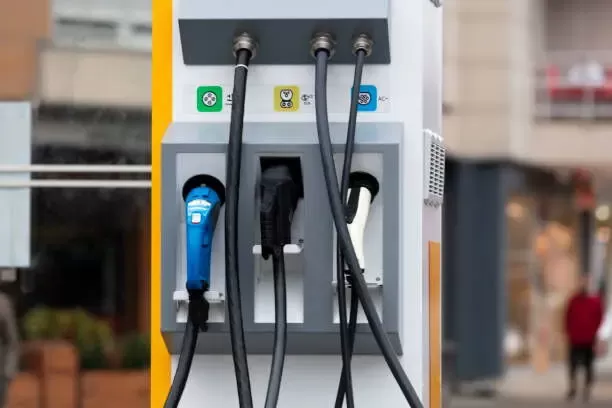Notifications

8 minutes, 34 seconds
-3 Views 0 Comments 0 Likes 0 Reviews

Introduction
As a professional EV charger manufacturer in China, Topper Company provides dependable electric vehicle charging equipment and comprehensive charging solutions.
Over the past decade, Europe’s electric vehicle (EV) market has surged, fueled by climate commitments, government incentives, and advancements in automotive and charging technology. What began as a niche movement has now become a cornerstone of the continent’s mobility landscape.
However, the rapid growth in EV adoption initially led to a fragmented charging ecosystem—different plug types, incompatible systems, and cross-border confusion. That changed with the widespread adoption of the Type 2 AC connector. Today, Europe boasts one of the most unified and accessible charging networks in the world, enabling seamless charging from city centers to rural roads.
This article explores the evolution of AC EV charging in Europe, the dominance of the Type 2 standard, the role of high-power AC solutions, and how these systems are shaping a smart, sustainable, and interconnected future.
In the early days of EVs, automakers raced to market with proprietary solutions that prioritized speed over compatibility. This led to a patchwork of charging systems that made travel inconvenient and infrastructure development complex. A car that charged easily in Spain might be incompatible in Austria or Poland.
To solve this, the European Union introduced mandates to standardize EV charging protocols. The Type 2 connector, originally developed by German company Mennekes, quickly emerged as the default for AC charging across the continent. Its versatility—supporting both single-phase and three-phase power—made it ideal for Europe’s electrical grid and user demands. Since 2014, the Type 2 plug has been legally required for all public AC charging stations in the EU and EFTA regions.
Power and Compatibility
The Type 2 plug supports a wide range of power outputs—from 3.7 kW for home use up to 43 kW in public three-phase installations. This flexibility is essential for meeting the varied charging needs of urban, suburban, and rural users.
Cross-Border Interoperability
With Type 2, European EV drivers can plug in anywhere—from Stockholm to Seville—with confidence. This universal standard eliminates the guesswork and enhances cross-border electric mobility.
Smart Charging Capabilities
Type 2 isn’t just about power—it enables communication between the charger and vehicle through its Control Pilot signal. This allows for dynamic load management, smart charging schedules, and future integration with vehicle-to-grid (V2G) systems.
While DC fast chargers are vital for rapid top-ups and long-distance travel, the majority of EV charging in Europe happens where cars spend most of their time—at home, work, and public parking locations. That’s where high-power AC charging excels.
Home Charging: Single-phase home chargers typically deliver 7.4 kW, while three-phase setups can provide up to 22 kW, fully charging an EV overnight.
Public Charging: AC stations in commercial areas and neighborhoods offer the same high-power options, serving drivers without private parking.
AC chargers are less expensive to install and maintain than DC fast chargers and require fewer grid upgrades—making them ideal for widespread deployment.
Wide Application
AC chargers fit seamlessly into homes, offices, shopping centers, and city streets—catering to diverse user scenarios with scalable infrastructure.
Cost Efficiency
Lower hardware and installation costs make AC chargers more affordable to deploy in high volumes, accelerating EV infrastructure rollout.
Renewable Energy Integration
AC charging can easily sync with local solar and wind systems, allowing EVs to run on clean, decentralized electricity.
Smart Grid Readiness
Advanced AC chargers support load balancing and time-of-use optimization, enhancing grid stability and reducing energy costs for users.
Improved Accessibility
With lower deployment costs, more chargers can be installed per euro invested—ensuring equitable access to charging in urban and rural settings alike.
Europe’s AC charging success isn’t just about technology—it’s about collaboration. Energy providers, automotive OEMs, municipalities, and tech startups all contribute to building a reliable, user-friendly public charging network.
In dense cities, streetlamp chargers—like those from Ubitricity or Shell Recharge—are transforming existing infrastructure into powerful, space-saving charging points. Meanwhile, businesses and office complexes are installing AC chargers to support employees, tenants, and fleets, often backed by EU funding and incentives.
Beyond transportation, AC charging plays a vital role in Europe’s broader climate and energy strategy. Millions of EVs connected to smart AC chargers form a flexible, responsive grid asset:
Load Shifting: Smart chargers can delay or advance charging based on energy demand, pricing, and renewable availability.
V2G Potential: In the near future, bidirectional AC chargers will allow EVs to discharge energy back to the grid—supporting local energy resilience and storing excess renewable output.
Europe’s progress is significant, but not without hurdles:
Grid Reinforcement: Some regions will require upgrades to support growing EV adoption and charger density.
Regulatory Alignment: Ongoing coordination is needed to ensure cybersecurity, open standards, and data interoperability.
User Awareness: Educating consumers about smart charging practices and energy-efficient behavior remains crucial for mass adoption.
The EU’s goal of 30 million zero-emission vehicles by 2030, alongside the 2035 ban on new fossil fuel cars, underscores the urgency of scaling infrastructure. AC chargers—standardized, accessible, and intelligent—are central to this vision.
By anchoring its charging ecosystem around the Type 2 plug and embracing smart AC technologies, Europe has laid a strong foundation for a cleaner, more connected future.
AC charging has quietly become the engine behind Europe’s EV revolution. From neighborhood lamp posts to highway rest stops, the combination of reliable hardware, forward-thinking policies, and smart energy integration has made daily EV use practical and sustainable.
As Europe accelerates its path to climate neutrality, the humble AC charger will remain a crucial link—empowering drivers, supporting smart grids, and helping build a greener continent for generations to come.Know more about Google SEO Directory
China EV Chargers EV Charger Manufacturer EV Charging Solutions

